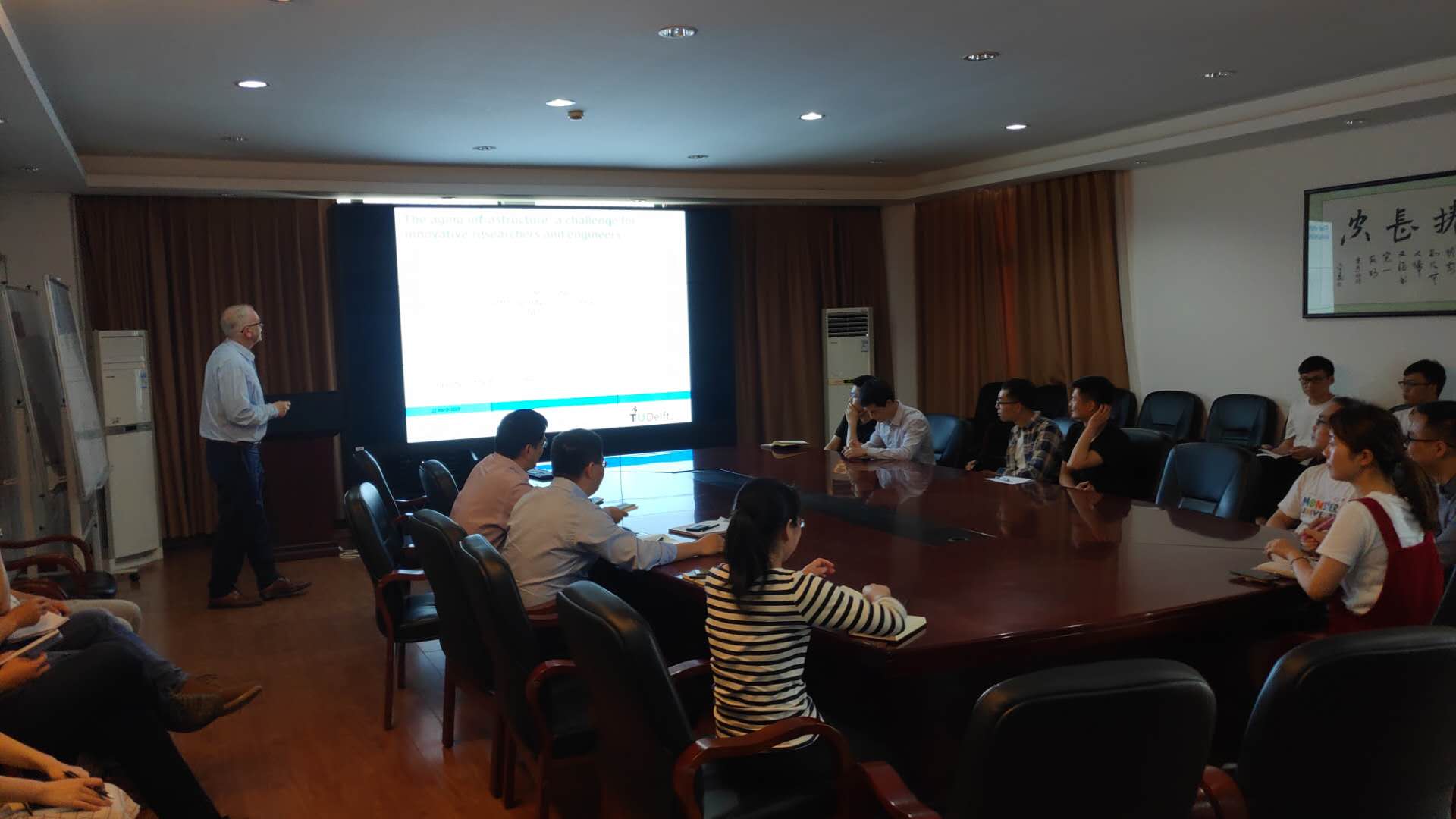荷兰代尔夫特理工大学Joost Walraven教授学术报告
报告题目:The aging infrastructure: challenge for researchers and engineers
报告人:Em. Prof. Joost Walraven
时间:3月21日(周四)下午16:00 - 18:00
地点:南校区土木与交通工程学院C501会议室

讲座简介:
All around the world during the last decades new bridges and tunnels have been built. The design of those structures aimed at satisfying the demands for structural safety and serviceability. Not too much attention was given to durability and service life.
Now we have reached a stage that many of those structures appear not to meet the demands of structural safety anymore and there is uncertainty about the remaining service life. There are three main reasons for worrying about structural safety and durability:
1.Many structures are subjected to higher loads than for which they have been designed originally.
2.The structural materials have lost a part of their strength and ductility due to material degradation, with the consequence that the structural safety has been reduced to an unacceptable level.
3.The structures have been built according to design rules, which are not accepted anymore.
Countries do now have to cope with large numbers of structures which have to be evaluated in order to make the right decisions, like closing, upgrading or even leaving like it is.
An important condition to make the right decisions is that we understand the behaviour of existing structures. It has been demonstrated that research can significantly contribute to a better understanding of structural behaviour and saving money by making correct decisions.
In the International Concrete Fédération fib, a new Model Code for Concrete Structures is under development, which should apply both to the design of new, and the assessment of existing structures. Four Task Groups work now with the aim to include existing structures with an unknown remaining service life in the new recommendation. The Task Group 3.2 deals with “Modeling the behaviour of existing structures”
In this presentation, an overview is given of the development of this relatively new field of expertise, with a number of practical examples.
报告人简介:
Professor Joost Walraven studied Civil Engineering at TU Delft and got his MSc in 1972. He was employed as a researcher at the Stevin Laboratory directly after his study and got his PhD degree in 1980 for the thesis: “Aggregate Interlock: an experimental and theoretical analysis”. He worked as a design engineer for Corsmit Consulting Engineers in The Hague from 1981 to 1985. He was appointed professor of Concrete Structures at the German University of Darmstadt in 1985. In 1989 he started as a professor of Concrete Structures at TU Delft.
Professor Walraven carried out research in many areas, like shear, punching, crack width control, creep and shrinkage of concrete, rotation capacity of concrete structures and the behaviour of precast concrete structures. Moreover he focused on the development of new types of concrete and their application, like high strength concrete, self-compacting concrete, high performance fibre concrete and low binder concrete. Additionally he carried out research on the residual bearing capacity of existing concrete bridges.
Professor Walraven was author and co-author of about 500 publications in scientific and professional journals and conference proceedings. Up to now he was promoter of 31 PhD’s in The Netherlands and 5 in Germany and was co-promotor of 20 PhD’s in Germany, Belgium, Sweden and Norway.
He was president of the International Concrete Federation fib from 2000 -2002. Moreover he was chairman of the Project Team responsible for writing the Eurocode 2 “Concrete Structures”, which was published 2004. He was convenor of the commission which wrote the fib Model Code for Concrete Structures 2010.
Actually he is chairman of the of the fib Task Groups 3.2 "Modelling of structural performance of existing concrete structures" and 4.2 "Ultra High Performance Fibre Concrete".
欢迎全校感兴趣的师生参加!
土木与交通工程学院
广东省滨海土木工程耐久性重点实验室
2019年3月20日
